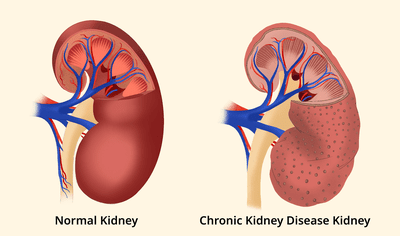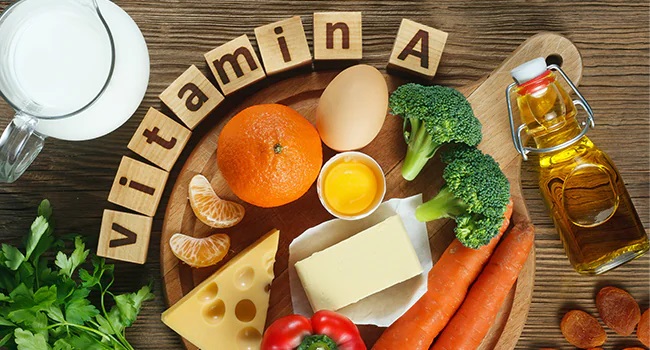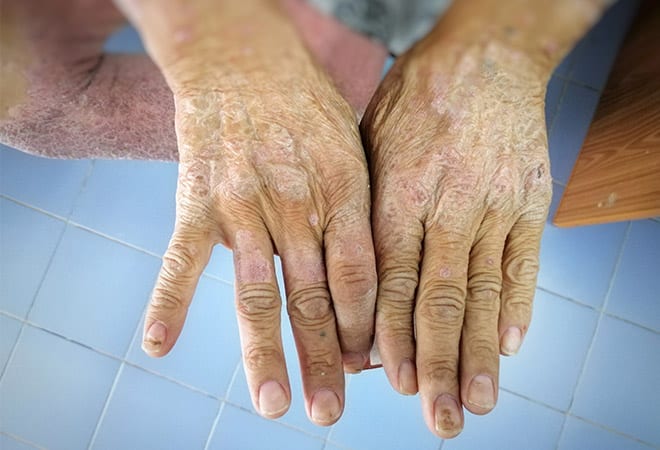
Kidney stones are a common and often painful condition affecting millions worldwide, with an estimated 10% of people experiencing them at some point in their lives, according to the National Kidney Foundation. These hard deposits of minerals and salts form in the kidneys and can cause significant discomfort as they pass through the urinary tract.
What Are Kidney Stones?
Kidney stones, also known as renal calculi, are solid masses formed from substances in the urine, such as calcium, oxalate, uric acid, or phosphate. They can vary in size from a grain of sand to a golf ball, with smaller stones often passing unnoticed, while larger ones may cause severe pain or complications. According to Mayo Clinic, “Kidney stones form when your urine contains more crystal-forming substances — such as calcium, oxalate and uric acid — than the fluid in your urine can dilute.”
Kidney stones can obstruct the urinary tract, leading to pain, infections, or kidney damage if untreated. Identifying the causes and recognizing symptoms early can help manage this condition effectively.
Causes of Kidney Stones
Kidney stones form when urine becomes concentrated, allowing minerals to crystallize and stick together. Several factors contribute to this process, ranging from diet and lifestyle to medical conditions and genetics.
Below are the primary causes.
1. Dehydration
Insufficient fluid intake is a leading cause of kidney stones. Low urine volume concentrates crystal-forming substances, increasing stone formation risk. Not drinking enough water each day can increase your risk of kidney stones. Dehydration can result from:
- Inadequate water consumption
- Living in hot, humid climates
- Excessive sweating from exercise or heat
Recommended: Kidney Stones: Treatment, Prevention, Foods to Avoid, and What to Expect
2. Dietary Factors
Diet plays a significant role in kidney stone formation. Key dietary contributors include:
- High Oxalate Foods: Foods like spinach, rhubarb, beets, and nuts increase oxalate levels, contributing to calcium oxalate stones, the most common type.
- High Sodium Intake: Excessive salt increases calcium excretion in urine, promoting stone formation. The NIDDK advises, “Eating too much sodium can raise the amount of calcium in your urine”.
- High Animal Protein: Diets rich in red meat, poultry, or fish increase uric acid and reduce citrate (a stone inhibitor) in urine.
- Low Calcium Intake: Paradoxically, too little dietary calcium can increase oxalate absorption, raising stone risk.
3. Medical Conditions
Certain health conditions predispose individuals to kidney stones:
- Hyperparathyroidism: Overactive parathyroid glands increase blood calcium levels, leading to calcium-based stones.
- Gout: Elevated uric acid levels can form uric acid stones.
- Urinary Tract Infections (UTIs): Recurrent infections can lead to struvite stones, often associated with bacteria.
- Inflammatory Bowel Disease (IBD): Conditions like Crohn’s disease increase oxalate absorption due to malabsorption.
- Obesity: Excess body weight alters urine chemistry, increasing stone risk.
4. Genetic and Family History
A family history of kidney stones increases risk, suggesting a genetic predisposition. That means if someone in your family has had kidney stones, you’re more likely to develop stones, too. Certain inherited conditions, like cystinuria, cause cystine stones due to excessive amino acid excretion.
See Also: Chronic Kidney Disease: Early Detection Matters
5. Medications and Supplements
Some medications and supplements can contribute to stone formation:
- Calcium or Vitamin C Supplements: Excessive intake can increase urinary calcium or oxalate.
- Certain Diuretics or Antacids: These may alter urine composition, promoting stones.
- Chemotherapy Drugs: Some treatments increase uric acid levels.
6. Types of Kidney Stones
Understanding the type of stone helps identify its cause:
- Calcium Oxalate (70–80%): Linked to high oxalate or calcium in urine.
- Uric Acid (5–10%): Associated with gout, high-protein diets, or acidic urine.
- Struvite (10%): Caused by UTIs, often larger and faster-growing.
- Cystine (1–2%): Rare, due to genetic disorders like cystinuria.
| Type | Description | Prevalence |
| Calcium Oxalate | Most common (70-80% of cases); caused by high oxalate or calcium in urine | 70-80% |
| Uric Acid | Forms in acidic urine; linked to high-purine diets (red meat, shellfish) | 5-10% |
| Struvite | Caused by urinary tract infections (UTIs); can grow large quickly | 10-15% |
| Cystine | Rare; genetic disorder causing cystine leakage into urine | <1% |
Symptoms of Kidney Stones
Kidney stones may remain asymptomatic until they move within the kidney or urinary tract. When symptoms occur, they can be intense.
Common symptoms include:
- Severe Pain: Sharp, cramping pain in the back, side, or lower abdomen, often radiating to the groin. Pain may come in waves (renal colic).
- Blood in Urine (Hematuria): Urine may appear pink, red, or brown due to stone irritation.
- Frequent Urination: Urgency or burning during urination, often with small urine volumes.
- Cloudy or Foul-Smelling Urine: May indicate infection or stone-related irritation.
- Nausea and Vomiting: Caused by intense pain or kidney obstruction.
- Fever and Chills: Suggest a urinary tract infection, requiring urgent care.
Skin Cancer: Warning Signs, Diagnosis, and Prevention
Small stones may pass unnoticed, while larger stones can cause blockages, leading to complications. Passing kidney stones can be quite painful, but the stones usually cause no permanent damage if they’re recognized in a timely fashion, according to Mayo Clinic.
Risk Factors for Kidney Stones
Certain factors increase the likelihood of developing kidney stones. Some key factors listed by the National Kidney Foundation include:
1. Demographic Factors
- Gender: Men are more likely to develop stones than women (12% vs. 6% lifetime risk).
- Age: Risk peaks between ages 20 and 50.
- Race: White individuals have a higher risk than other ethnic groups.
2. Lifestyle Factors
- Low Fluid Intake: Less than 2–3 liters of water daily increases urine concentration.
- High-Sodium or High-Protein Diets: Promote stone-forming substances.
- Sedentary Lifestyle: Inactivity may increase calcium excretion in urine.
3. Medical and Genetic Factors
- Previous Kidney Stones: A history of stones increases recurrence risk by 50% within 5–7 years.
- Chronic Conditions: Diabetes, hypertension, or metabolic syndrome elevate risk.
- Family History: Genetic predisposition significantly increases likelihood.
4. Environmental Factors
- Hot Climates: Increased sweating in warm regions like the “stone belt” (southeastern U.S.) raises dehydration risk.
- Occupational Exposure: Jobs involving heat or limited water access heighten risk.
Complications of Kidney Stones
Untreated kidney stones can lead to serious complications, including:
- Urinary Tract Infections: Obstruction can trap bacteria, leading to infections like pyelonephritis.
- Kidney Damage: Prolonged obstruction may impair kidney function, potentially causing chronic kidney disease.
- Hydronephrosis: Urine backup due to blockage swells the kidney, causing pain and potential damage.
- Sepsis: A life-threatening infection if bacteria spread to the bloodstream, as noted by the Urology Care Foundation.
Obesity: Causes, Risks, and Weight Management
Diagnosis of Kidney Stones
Diagnosing kidney stones involves a combination of medical history, physical exams, and diagnostic tests. It usually involves imaging tests and urine analysis to identify the stone’s size, location, and type.
Common methods include:
- Imaging: CT scans, ultrasounds, or X-rays locate stones and assess blockages.
- Urine Tests: 24-hour urine collection identifies excess stone-forming substances or low citrate levels.
- Blood Tests: Check for high calcium, uric acid, or kidney function issues.
- Stone Analysis: Collected stones are tested to determine their composition.
Prevention Strategies
Preventing kidney stones focuses on reducing risk factors and modifying urine chemistry. Drinking more water and making changes to what you eat and drink can help prevent kidney stones.
Key strategies include:
1. Stay Hydrated
- Drink 2–3 liters of water daily to produce at least 2 liters of urine, diluting stone-forming substances.
- Include citrus-based drinks like lemonade, as citrate inhibits stone formation.
2. Adjust Diet
- Reduce Sodium: Limit intake to 2,300 mg daily to lower urinary calcium.
- Moderate Oxalate Foods: Pair high-oxalate foods with calcium-rich foods (e.g., dairy) to bind oxalate in the gut.
- Balance Protein: Limit animal protein to 0.8–1 g/kg of body weight daily.
- Increase Fruits and Vegetables: These raise urine citrate and reduce acidity.
3. Manage Medical Conditions
- Treat underlying conditions like gout, hyperparathyroidism, or UTIs promptly.
- Monitor chronic diseases like diabetes or IBD with regular medical care.
4. Maintain Healthy Weight
- Achieve and maintain a BMI of 18.5–24.9 through diet and exercise, as obesity increases stone risk.
5. Avoid Overuse of Supplements
- Use calcium or vitamin C supplements only as prescribed, as excess can contribute to stones.
Pneumonia: Symptoms, Treatment, and Recovery Timeline
Treatment Options
Treatment for kidney stones varies depending on the size and location of the stone and whether it’s causing symptoms.
- Conservative Management: Small stones (<5 mm) often pass with increased fluid intake and pain management (e.g., NSAIDs).
- Medications: Alpha-blockers (e.g., tamsulosin) relax the ureter to aid stone passage. Potassium citrate or allopurinol may prevent recurrence.
- Surgical Interventions:
- Extracorporeal Shock Wave Lithotripsy (ESWL): Breaks stones with shock waves for easier passage.
- Ureteroscopy: A scope removes or fragments stones in the ureter or kidney.
- Percutaneous Nephrolithotomy (PCNL): Surgery for large stones (>2 cm) via a small incision.
- Lifestyle Changes: Long-term dietary and hydration adjustments prevent recurrence.
Living with Kidney Stones
Recurrence is common, with a 50% chance of another stone within 5–7 years. Regular follow-ups, urine and blood tests, and adherence to prevention strategies are essential. Support groups or counseling can help manage the emotional toll of chronic stones, especially for those with frequent episodes.
Common Causes of Infertility in Men and Women and Treatments







